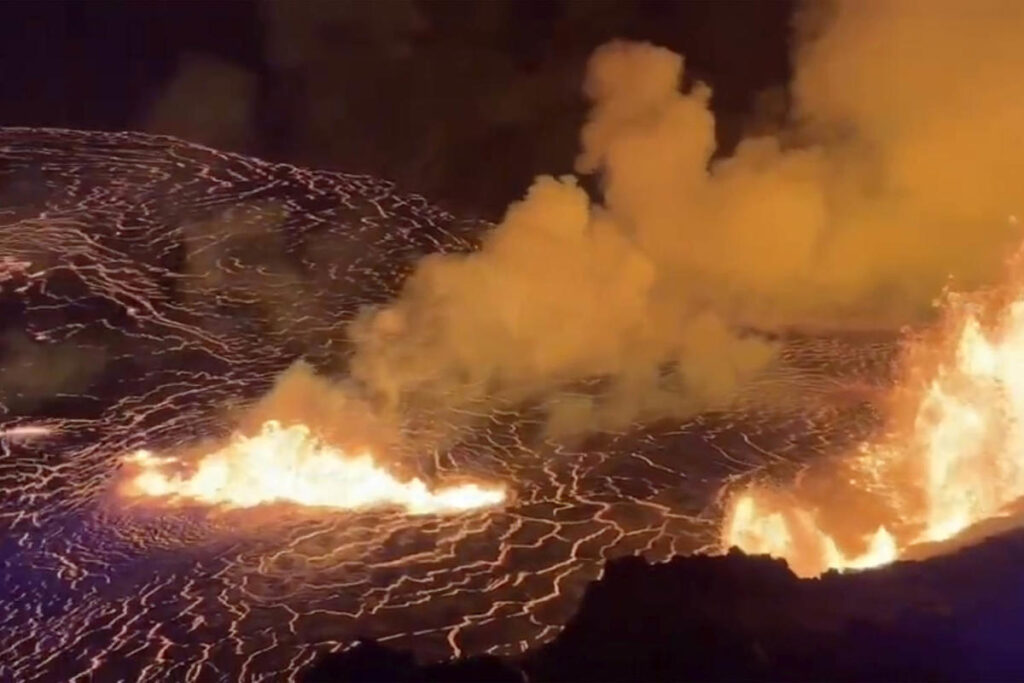Kilauea, one of the world’s most active volcanoes, erupted again early Monday morning, showcasing impressive lava fountains that reached heights of over 200 feet. This eruption commenced around 2 a.m. local time, drawing the attention of officials and experts alike. Ken Hon, head scientist with the Hawaiian Volcano Observatory, indicated that this eruption might continue for some time, but there were no immediate threats to any infrastructure in the surrounding areas, according to the U.S. Geological Survey. The volcano’s historical propensity for eruptions has made it a subject of close observation for researchers and the local populace.
The eruption has led to the release of “vog,” a term used to describe volcanic smog composed of a mixture of water vapor, carbon dioxide, and sulfur dioxide. The forecast warns that elevated levels of vog are expected to blanket areas south and west of Kilauea in the coming days. Hon advised residents in these regions to take precautions and remain indoors to avoid potential health risks associated with high concentrations of volcanic gases. This caution is particularly relevant given that vog can have adverse effects on respiratory health and aggravate pre-existing conditions.
By 4:30 a.m. on the day of the eruption, lava fountains had surged to heights of approximately 262 feet. Alongside the towering streams of molten rock, “lava bombs” and other types of ejecta were also being expelled from the volcano’s crater, creating a dramatic display. As the eruption progressed, by 5:30 a.m., the U.S. Geological Survey reported that approximately 400 acres of the caldera floor had become covered in fresh lava. These active lava flows and explosive ejecta demonstrate Kilauea’s continuing geological activity and the dynamic nature of the volcano.
Situated in Hawai’i Volcanoes National Park on the Big Island, Kilauea has a long history of eruptions, with a sustained activity record dating back to 1983. The volcano has seen various phases of eruption and has dramatically reshaped the landscape over the years. Notably, its recent eruptions in June and September of the previous year highlighted this ongoing volcanic activity. The historical context of Kilauea underscores its status as an important site for both scientific exploration and cultural significance, with many residents having adapted to living in proximity to such a powerful natural force.
The 2018 eruption of Kilauea serves as a painful reminder of the volcano’s destructive capabilities. That eruption led to significant devastation, including the destruction of dozens of homes and the displacement of thousands of individuals. This event has left an indelible mark on the communities around the volcano, raising awareness about the risks associated with living near an active geological feature. Such events prompt larger discussions about disaster preparedness and response in Hawaiian communities, as well as the role of monitoring agencies in safeguarding the public’s well-being.
In summary, the latest eruption of Kilauea is a potent demonstration of the ongoing volcanic activity that characterizes this remarkable volcano. While immediate threats to infrastructure have not been identified, the potential health hazards related to vog are a significant concern. Local authorities, scientists, and residents must remain vigilant, balancing the awe-inspiring power of nature with the necessary safety precautions for those living nearby. The legacy of past eruptions informs current responses and preparedness efforts, highlighting the enduring relationship between the Hawaiian people and their environment.

